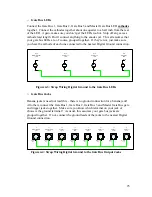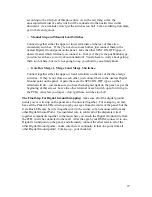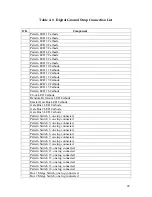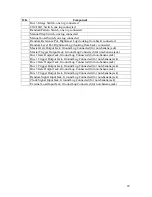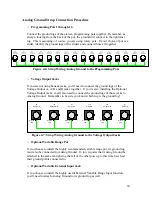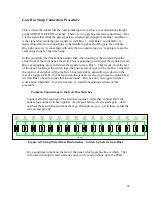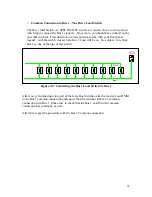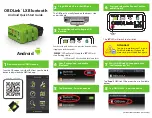
4.
Strap Wiring The Front Panel
What is Strap Wiring?
On the front panel, there are many connections referred to here as “common
connections”. A common connection is a single node more than one panel component
will connect to. For example, all sixteen of the programming pots all connect to a single
ground point (Analog Ground). Rather than connecting sixteen wires, one for each pot,
from the Analogue Board to the front panel, it’s more expedient and just as effective to
connect all of the pots together, then run a single Analog Ground wire to a single point all
of the pots connect to. The act of connecting all the pots together is termed “strap
wiring” the pots.
Strap wiring all of the common connections together on the front panel before any board
connections are made makes assembly much easier. You can lay the panel on a piece of
foam, or suspend it some way above your work surface (you don’t want to scrunch down
on your mounted components!) and solder the strap connections on before you have to
deal with any of the “dangling” wires that will connect to the printed circuit boards.
What Material Should Be Used For Strap Wiring?
Obviously, any wire can be used. If insulated wire is used, one must cut, strip and tin the
ends of the wire to connect each common point together. This has the advantage of
being insulated from inadvertent shorting to any other point, but, at the same time, is a lot
of work. Bare bus wire, on the other hand, has the twin advantages of easily being
soldered without stripping or tinning, and allowing any point to be connected when it
comes time to connect the common point to the PCB. The disadvantage is it is not
insulated. Insulation can be purchased for it, but that may not be all that necessary.
If a bus wire of a suitable stiffness is used, say 22 gauge bus wire, the bus wire will stay
in place and will not itself “move” and short out anything else. Several strapped
connections will in turn need to be connected together, and insulated wire can easily be
used to do that, when the wire will need to pass close to any point you
don’t
want
connected together. Using bus wire, one can connect the PCB connection to a central
point, so the signal flow can follow a “star” pattern. For example, one could connect the
insulated PCB connection for Analog Ground in the middle of the programming pots, so
the ground does not feed from one end to the other, but “spreads out” from the middle,
for want of a better explanation.
What Common Connections Need to Be Strap Wired?
Most of the panel components will need to be strapped to either Digital Ground, Analog
Ground, Bus 1, or Bus 3. If you look at the Front Panel/Interconnect schematic of the
electro-music
Klee Sequencer, you will notice that Analog Ground is labeled “Analog
22


















